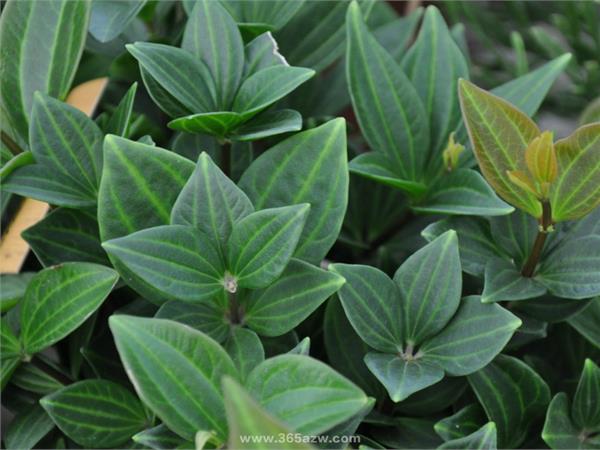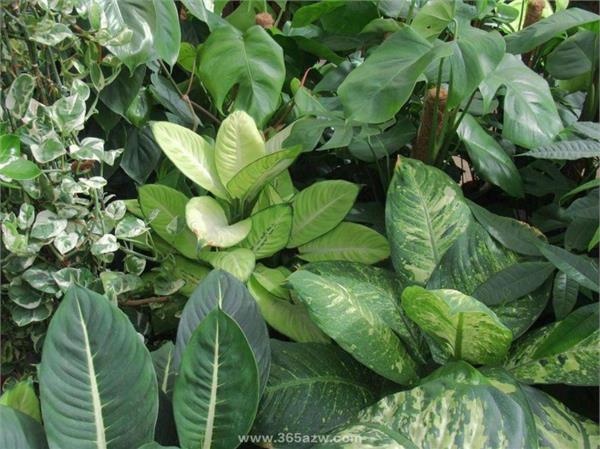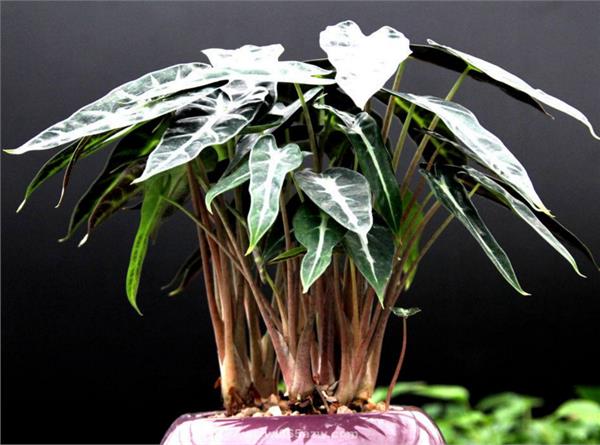Culture methods and matters needing attention of foliage plants in winter
Foliage plants generally refer to plants with beautiful leaves and beautiful leaves, which are native to high-temperature and humid tropical rain forests and require less light, bamboo taros, ferns and so on. Today, we would like to introduce to you the winter culture methods and matters needing attention of foliage plants.

Culture methods and matters needing attention of foliage plants in winter
In order for foliage plants native to tropical and subtropical regions to keep their leaves green and full of vitality in winter, the following should be done:
Keep warm and prevent frost
The minimum temperature requirements for overwintering of different foliage plants are different, and the cold resistance of different varieties of the same kind is also obviously different. Therefore, it should be carried out in batches and classified to overwinter according to different regions, plant species and varieties. Keeping warm and anti-freezing is an important maintenance work for foliage plants to survive the winter safely. According to the different requirements of foliage plants for overwintering temperature, the author thinks that they can be divided into four categories and take different measures to keep warm and prevent freezing.
The first category, the overwintering temperature can not be lower than 5 degrees Celsius foliage plants, such as Tianmeng, flower and leaf ivy, goose palm autumn, star anise gold plate, flowers and leaves Ruyi, sea taro, cold water spray, sunflower, etc., these plants have a certain cold resistance, can survive the winter safely under general cold protection facilities, or enter a single-layer plastic greenhouse or general greenhouse.
Second, foliage plants that can not be lower than 8 degrees Celsius, such as swallow palm, Saxifraga, jade emperor, fish tail sunflower, Buddha belly bamboo, red bird nest fern and so on. Have a certain degree of cold resistance, but the coldest should be covered with a layer of plastic film in the greenhouse or indoor.
The third category, foliage plants that can not be less than 10 degrees Celsius, such as asparagus, hanging orchid, bean green, flower leaf taro, red feather bamboo taro, green apple, fragrant dragon blood tree, Nanyang fir, Fugui bamboo and so on. In winter, it should be placed in a two-story plastic greenhouse or a greenhouse covered with a layer of plastic film.
Fourth, foliage plants that can not be less than 15 degrees Celsius, such as sunflower, variable leaf wood, white reticulate grass, rich tree, Boston fern and so on. The requirement for overwintering temperature is relatively high, so it is best to put it in a greenhouse with heating equipment. If there is no heating condition, it can be placed in a two-story plastic greenhouse. Southern conservation should cover the top of foliage plants with a layer of plastic film between 3 pm and 9 am the next day.

2. Proper watering
After winter, the growth of foliage plants is basically stagnant, some plants enter the dormancy stage, the water absorption capacity is also greatly reduced, watering should not be too much, too much. Sufficient water should be poured at one time before entering the shed or room, and the basin soil should be kept slightly dry during the period in the shed, so as to facilitate the overwintering of foliage plants. When it is found that the basin soil is too dry, it should be watered at 11:00 on a warm and sunny day, and the amount of water should not be too large or watered in the morning or evening. The water temperature should be similar to the room temperature, and the temperature difference should not be too large. Foliage plants are usually watered once a month in winter, and too much is easy to cause root rot. The indoor air is dry in northern winter, such as peacock bamboo taro and other plants need to spray leaves with cold water during the day to improve indoor humidity and maintain their beautiful leaf color; during the overwintering period, sea taro spray warm water every 3-5 days to keep the leaf color dark green; flowers and leaves are evergreen. In winter, warm water needs to be sprayed 2-3 times a week to clean the foliar dust to improve indoor air humidity and make patches bright and strong.

III. Ventilation
Foliage plants in the greenhouse or indoor winter, need a certain amount of air humidity, but not too high. Therefore, it is necessary to open the doors and windows in sunny and warm days to adjust the air humidity, especially the high air humidity in the plastic greenhouse, we should pay more attention to ventilation. Ventilation is generally appropriate from 9 am to 3 pm. Winter cultivation of foliage plants light is also very important, oblique sunlight in winter, the light intensity is half of summer, for some large sunny woody foliage plants should be placed in the periphery of the shed, such as Xianglong blood tree, fish tail sunflower, rubber tree, variable leaf tree and so on. Under sufficient light, foliage plants also become thinner and yellow in winter.
For some small herbaceous foliage plants, they should be placed in high places, such as asparagus, colored leaf grass, shade-tolerant and half-shade foliage plants, such as green apple, brown bamboo, loose-tailed sunflower, tortoise back bamboo, asparagus, cold water flower, sea taro, plantain, etc., these plants also need a certain amount of light in winter, due to the high humidity in the shed, diseases and insect pests will occur if there is a frequent lack of light, so it is necessary to "turn the shed" to change the position during overwintering. Ensure the safety of foliage plants through the winter.

This is the end of the introduction about the winter culture methods and matters needing attention of foliage plants. I hope the above contents can be explained to everyone!
This is the end of the introduction about the winter culture methods and matters needing attention of foliage plants. I hope the above contents can be explained to everyone!
Related
- Wuhan Hospital Iron Tree Blooming Result Was Instantly Frightened by the Gardener Master
- Which variety of camellia is the most fragrant and best? Which one do you like best?
- What is the small blue coat, the breeding methods and matters needing attention of the succulent plant
- Dormancy time and maintenance management of succulent plants during dormancy
- Minas succulent how to raise, Minas succulent plant pictures
- What are the varieties of winter succulent plants
- How to raise succulent plants in twelve rolls? let's take a look at some experience of breeding twelve rolls.
- Attention should be paid to water control for succulent plants during dormant period (winter and summer)
- Watering experience of twelve rolls of succulent plants
- Techniques for fertilizing succulent plants. An article will let you know how to fertilize succulent plants.



